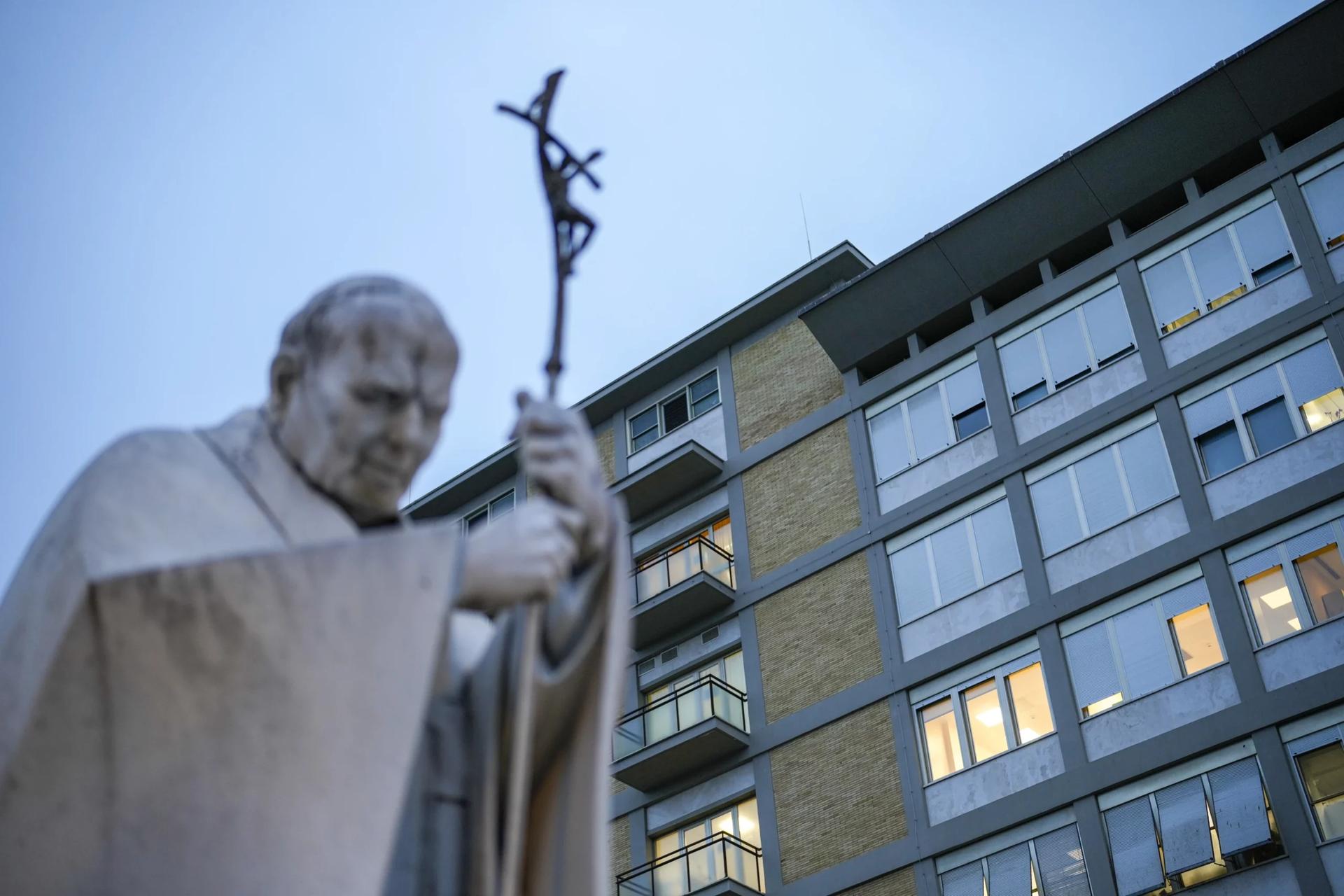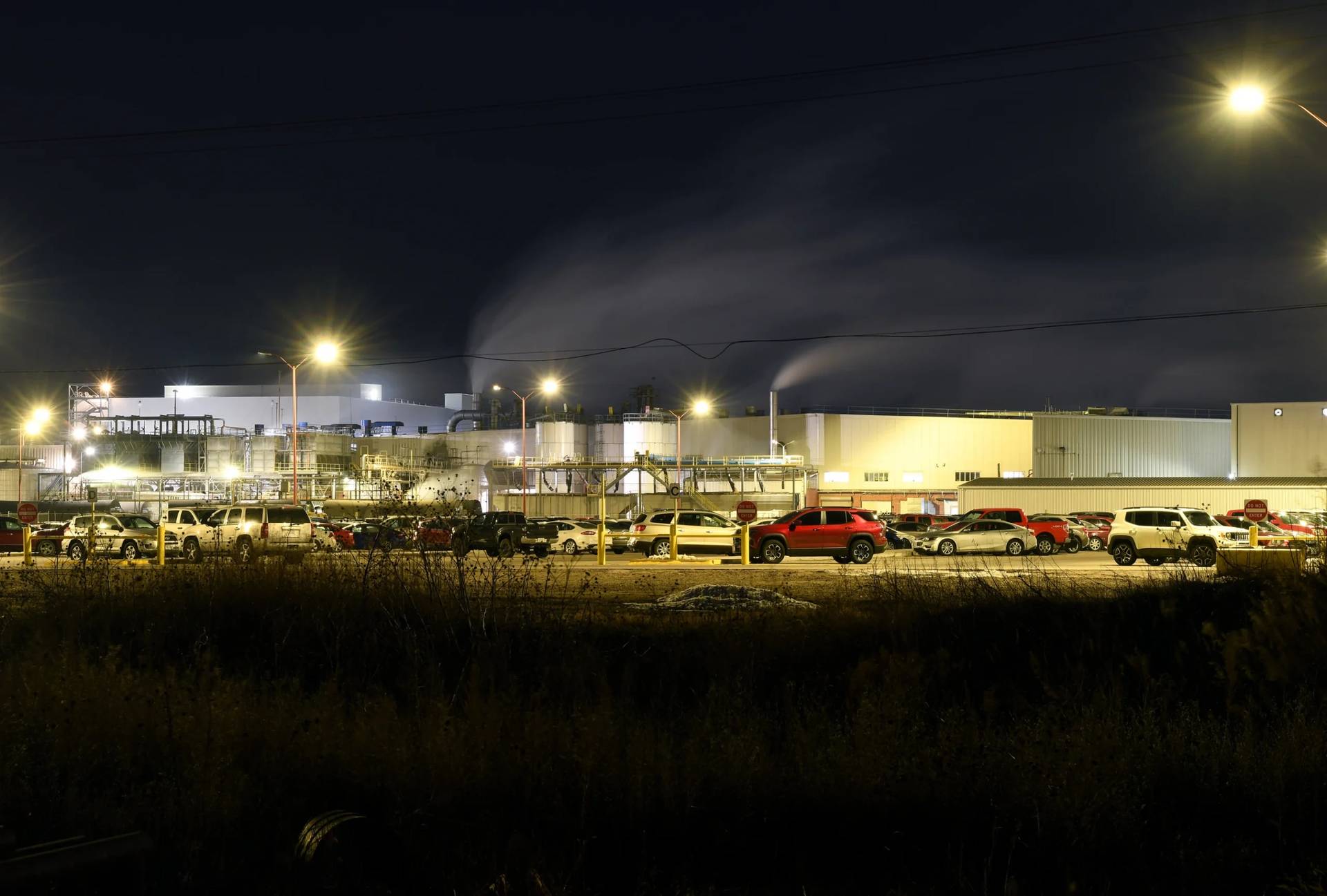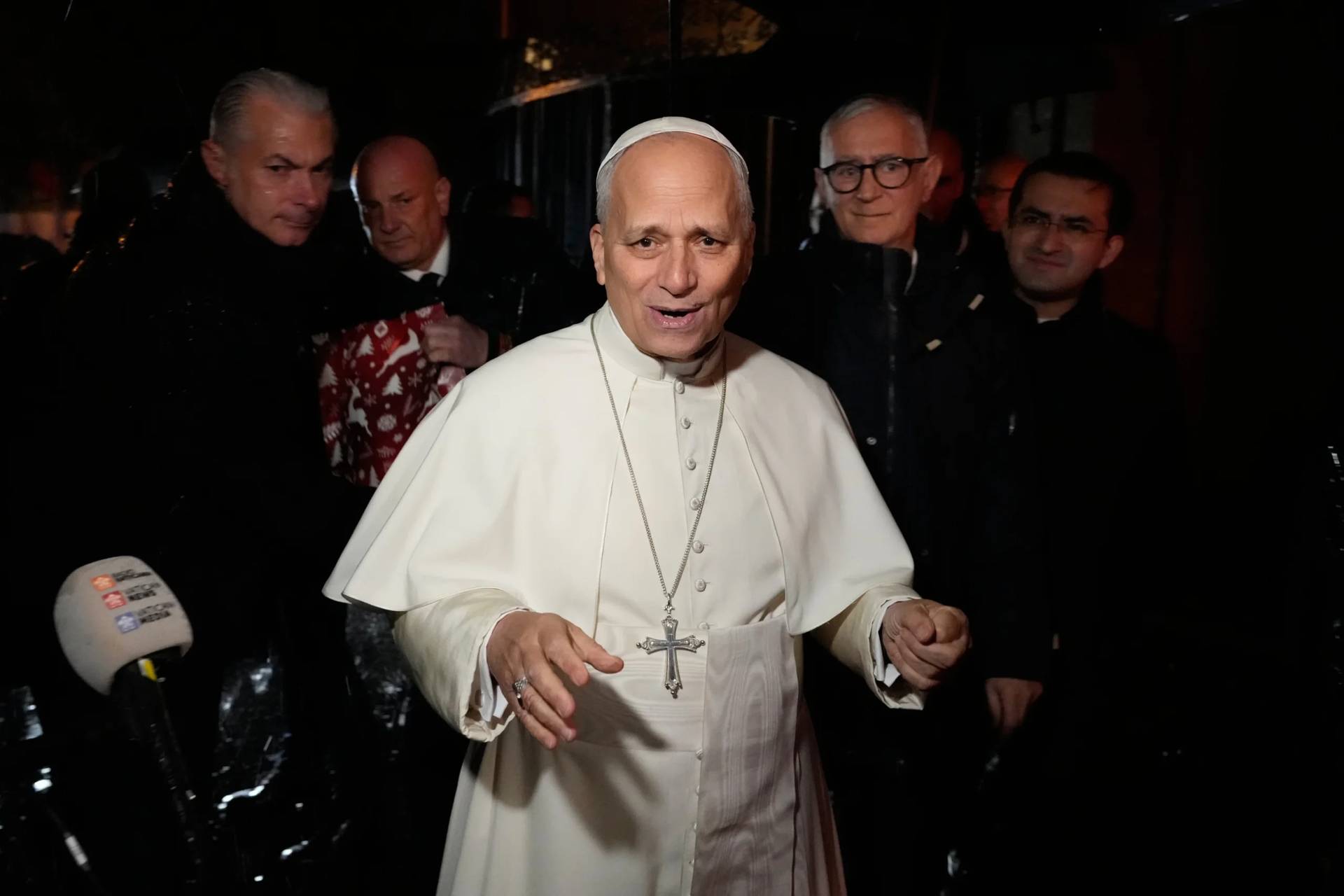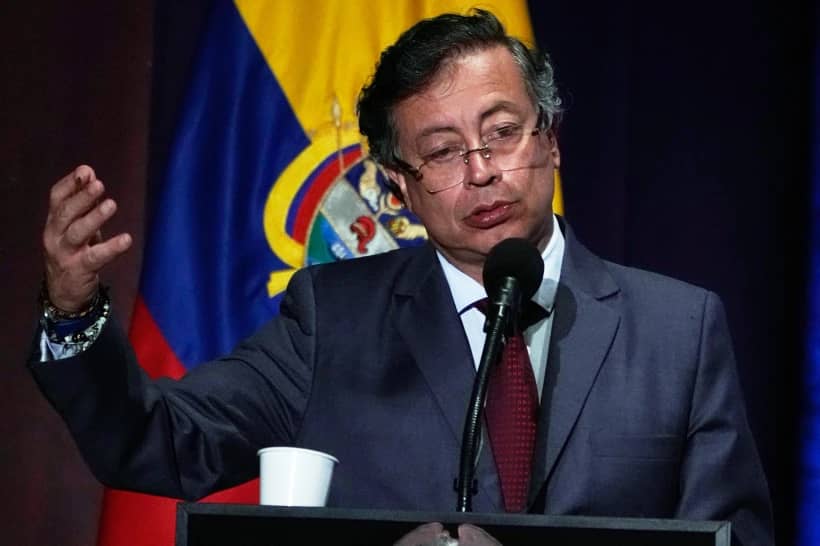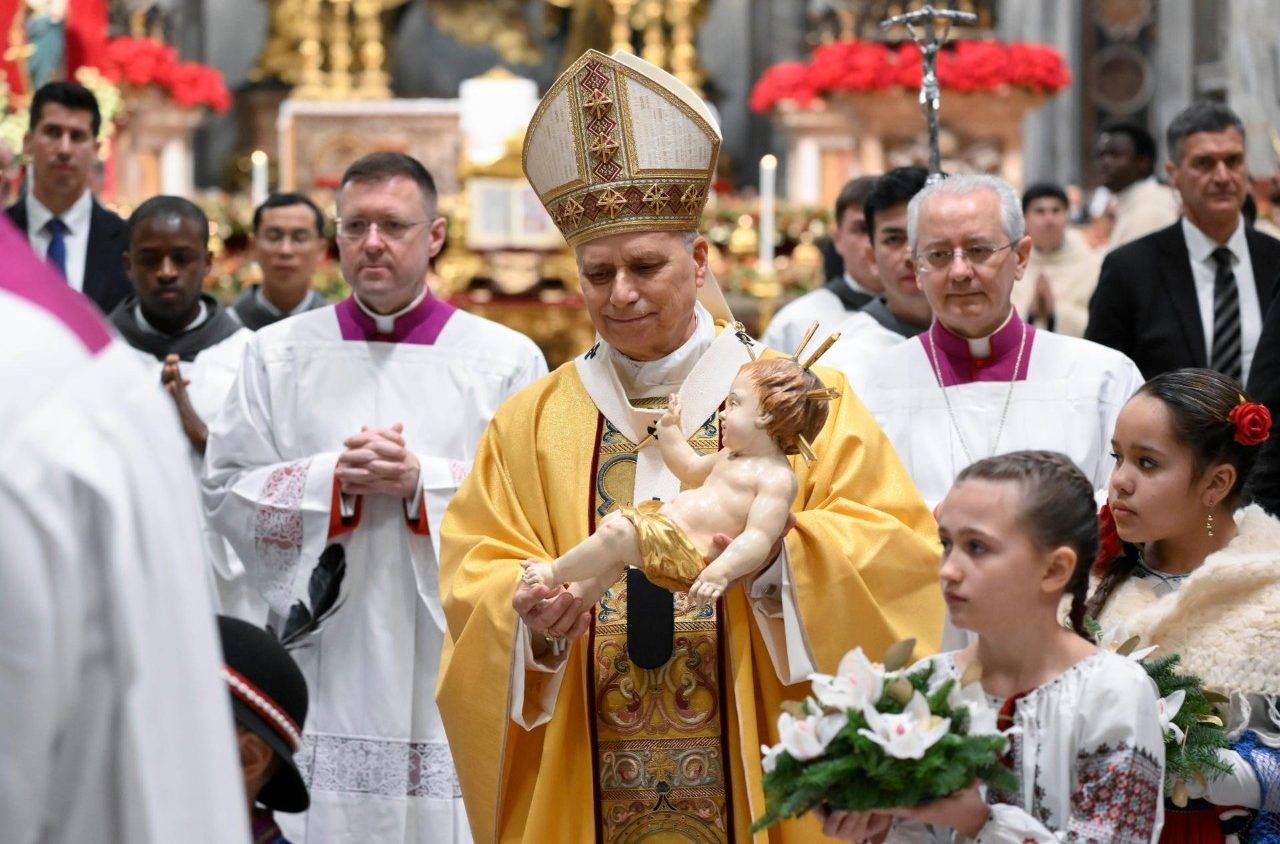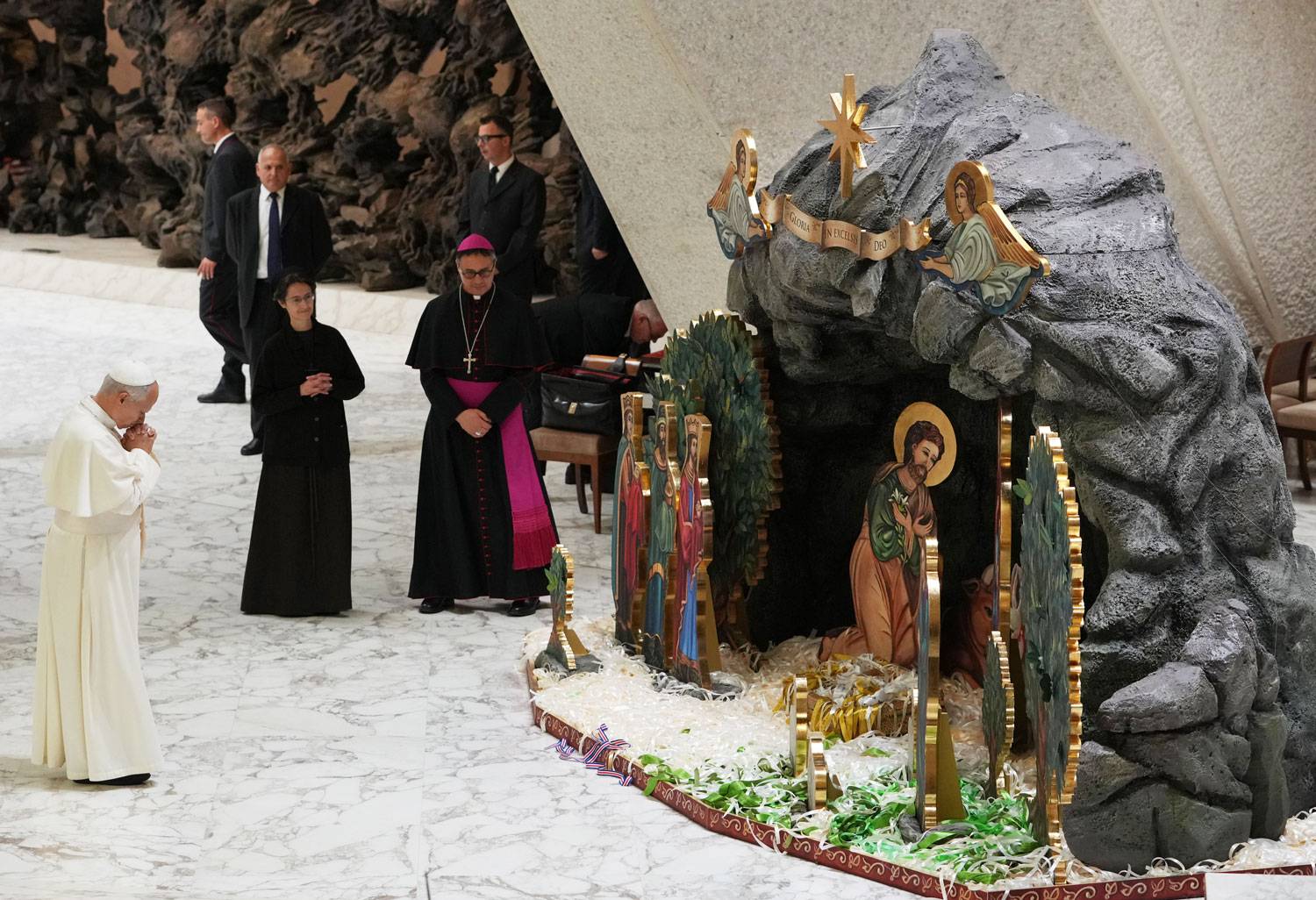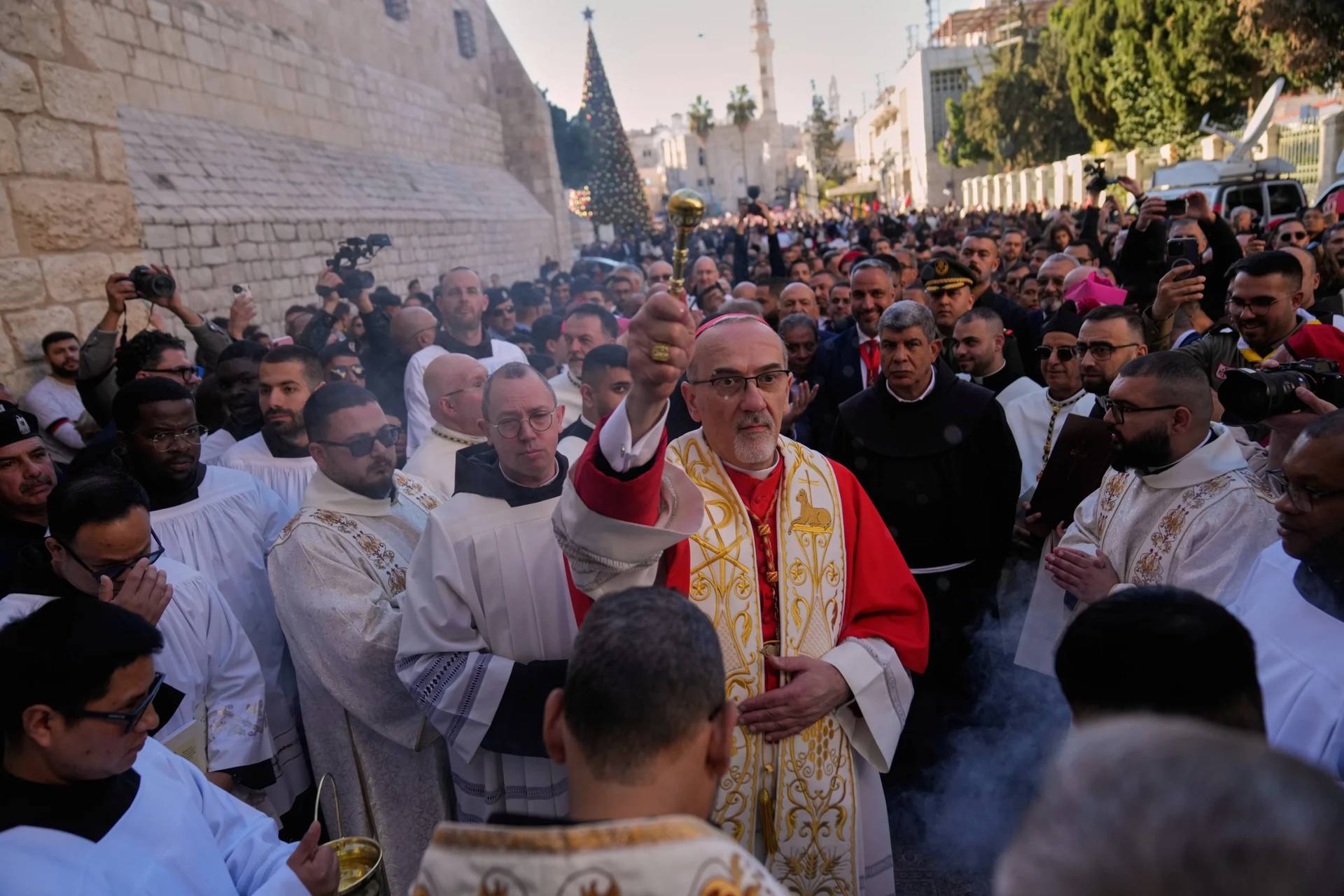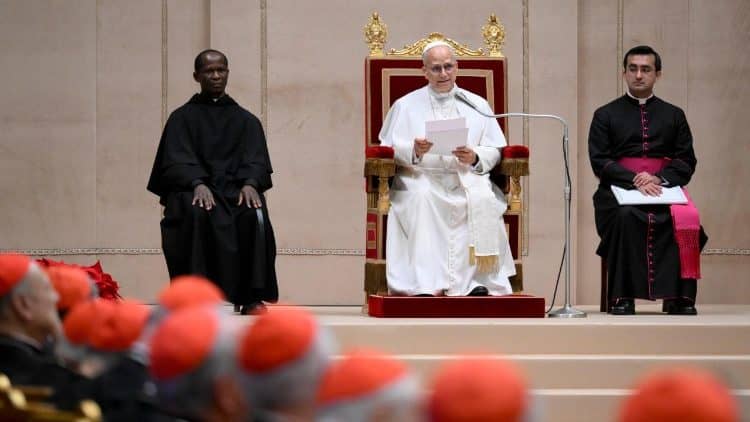ROME – Pope Francis remains in critical condition following a prolonged respiratory crisis and while his blood tests show slight improvement in his anemia, his platelet count remains low and he is now is being treated for a slight renal insufficiency.
A Feb. 23 Vatican communique said, “the Holy Father’s condition remains critical; however, since yesterday evening he has not had other respiratory crises.”
Following what the Vatican described as a “prolonged respiratory crisis” and blood tests that revealed anemia on Saturday, the pope received two units of concentrated red blood cells which Sunday’s statement said resulted in an “increase in the level of hemoglobin.”
Anemia is a blood condition in which the blood has a reduced ability to carry oxygen, which can be caused by a lower than usual number of red blood cells.
On Saturday, the pope was also diagnosed with a condition called thrombocytopenia, in which his blood platelet count is low.
Sunday’s medical bulletin said the thrombocytopenia the pope is experiencing was “stable,” but that laboratory tests had revealed initial “mild” signs of kidney failure, but which they said is currently “under control.”
Pope Francis continues to receive oxygen through the nose, and he is “vigilant and aware.”
The Vatican said that given the complexity of his clinical status and the need to wait to see if the therapies being administered are working, his overall prognosis is still “reserved,” meaning there is a chance he could recover, but they are also unsure whether he will survive.
On Sunday morning the pope participated in the celebration of Mass in his apartment on the 10th floor of Rome’s Gemelli Hospital, where he has been receiving treatment since Feb. 14, alongside those who are attending to him during his hospital stay.
He was admitted to the Gemelli Hospital Feb. 14 for the treatment of bronchitis which for two weeks had left him breathless and unable to read prepared speeches.
Francis was later diagnosed with a complex viral, bacterial and fungal respiratory tract infection and the onset of pneumonia in both lungs, with doctors repeatedly calling his overall clinical status “complex.”
Doctors on Friday, Feb. 21, urged caution regarding the pope’s condition, telling journalists in the first press conference since the pope entered the Gemelli that while stable at the time, he was “not out of danger,” and that his situation remained complicated.
They warned that the main threat Francis faced was the potential onset of sepsis, a serious blood infection that can damage the body’s organs and which can occur as a complication of pneumonia.
While indicating the initial signs of renal failure that are “under control,” Sunday’s statement did not mention sepsis.
The pope, 88, suffers from chronic lung disease and is especially prone to bronchitis in winter, having suffered from the condition with increased frequency in the past two years.
On Sunday evening, Cardinal Baldassare Reina, the vicar of Rome, celebrated Mass at the Roman Basilica of Saint John Lateran for the pope’s health, and asked that faithful join or that other Masses be celebrated at the same time as a sign of unity in prayer for the pope.
Follow Elise Ann Allen on X: @eliseannallen
